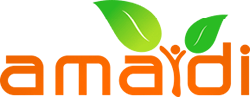Description
A “hackathon” (composition of “hacking” + “marathon”) is a short duration activity for which people come together to solve certain real life problems (challenges) in a friendly and fair competition. It provides space and time for participants to make progress in solving the problem they are interested in and an opportunity to learn about specific topics (topic of the hack). Training workshops/lectures are very good accompanying activities, for participants in general and beginners in particular. “Hacking” is a creative way of solving problems, leaving out conventional rules (innovation process) under short but continuous effort (2-3 days, nights included). The problem domain could be a lesser/greater challenge relative to the innovation goal, and does not necessarily have to involve technology (however, in most cases, technology is one of the enablers for participants). The activities usually take place either physically and/or virtually with many, competent participants (“hackers”), which can be students, experts, researchers. This type of event has three goals: to strengthen the involved community, to attract and welcome newcomers, to give participants the opportunity to learn something new. They are well suited to bring momentum to available innovation resources, rapid development and real demos of services/product ideas. This could be organized both physically for a maximum of 100 participants and 2-3 days, or virtually, which allows to reach even more participants and different geographical locations (for this purpose it could also be useful to organize a hackathon taking place in different cities at the same time).
FOR WHOM? You can invite as many participants as you like, but it is also important to keep in mind the logistics, costs and ultimate experience of the participants, as well as the results achieved by the innovation ideas developed and presented. Experience has shown that 40 participants is a very good number. A participant count of 100-150 is excellent, but could be quite complicated in managing the overall process and requires more staff and budget. Participants typically form groups of 3-5 people who unpack their laptops (if the event is technology related), dive into the problems with enthusiasm, and engage in “fun” competition with each other. Participants will be guided by the moderator and a team of tutors and judged by a panel of experts. Interested visitors are welcome to this event to build momentum to the most important moments in this competition. It is essential to invite enthusiastic participants to the hack. It depends on the field, but diversity is important. To develop a good proof of concept (PoC), it is important to invite developers, graphic designers, interface and usability (UX) designers along with other experts in the field so that in a collective, people think differently about the challenge/problem.
RESOURCES A good hackathon is expensive: rooms, food, drinks, and prizes to be awarded are the minimum resources required. A professional hackathon for about 50-60 participants costs about 10,000€ in total. Part of the total cost could be covered by local partners and sponsors.
In general, it requires the following resources:
Management: setting up an organizing committee composed of different regional stakeholders and identifying the lead partner who can manage the hackathon (this could be an association composed of the same target groups of a hackathon).
Sponsors & Prizes: Find sponsors (from stakeholder groups and local businesses) and determine if the event is free to participants.
Involve sponsors for prizes (which are important to entice participation). Prizes could be certified training, shopping vouchers, equipment, to trips to major universities.
A suitable place for the hackathon: large open space, 1-2 side rooms, a place for catering and if possible also a place where participants can retire to rest, tables and chairs (movable), many power plugs.
Network: a professional WLAN with a high fire bandwidth and reliable 24×7 availability.
PREPARING THE PROCESS The process of organizing and running a successful hackathon could take different amounts of time depending on the problem/challenge and target groups involved. Please note that it is difficult to fully solve the problem/challenge by the end of the hackathon. This is normal because real life problems are complex and cannot be addressed in a few days, but an operational PoC (Proof of Concept) could be set up by outstanding teams and provide an innovative application of knowledge and technology available in real cases. These PoC could perhaps be developed from offline activities or through direct stakeholder interest in the weeks following the hackathon. The hackathon is usually just one action on a longer list of actions needed to address a larger problem (e.g., innovate by digitizing public administration), but can also be a training session to prepare participants to solve problems or innovate in specific areas….
In general, the following resources are required:
Define the goal and target audience of the hackathon: Establish organizing committee of representatives from several different regional stakeholders and identify a lead partner who can manage the hackathon project (could be an association that has the same target audience of a hackathon)
Find sponsors (from stakeholder groups and local businesses) and define if the event is free for participants.
Define tasks, responsibilities and duties, as well as the budget and by whom.
MODERATOR The event requires a main moderator and a team of tutors. The main moderator is the main contact person for the participants, explains in detail the agenda of the hackathon, keeps track of the schedule and keeps it in touch with hackathons running in other locations (if it is a multi-site hackathon).
PURPOSE It is important to define the purpose of the hackathon. It should be challenging, but also doable in 2-3 days and/or longer. The hackathon is a powerful tool to test new resources made available in a broad field, such as newly released open datasets or new software from a specific project (e.g., a public software platform that could foster innovation), or a freely available resource that is not yet heavily used (e.g., a chatbot development network), or to focus on an entire scientific field with potential (e.g., data, software, and methods that address climate change). Even if the resource available is different, the purpose of a hackathon is always a unique event where a PoC can be created and concepts can be made available to everyone (so the deliverables should be open source if possible).
DEFINE SCHEDULE AND LOGISTICS It is essential to define the schedule of the event. Communication planning is essential to get participants and add momentum to the event. At least a month before the event, the rough challenges/problems should be posted on the hackathon website, along with all other organizational details, to give potential participants enough time to consider whether they are qualified and willing to make good contributions. Logistics also need to be considered. Groups of about 3-5 people will need a table and chairs, some power plugs, and a powerful wifi connection, faster rather than slower, and capable of serving all participants at once (a simple home wifi router is not sufficient and can be really frustrating for participants). A basic schedule for a general hackathoncan be found here. (www.brightidea.com)
hachathon planning timeline
SUPPORTING DOCUMENTATION A website, at least in the form of a wiki should be created prior to the invitation. A draft list of challenges/problems that are the topic of the hackathon should also be defined beforehand.
Keep the list open, as participants might suggest interesting similar challenges.
INVITE PARTICIPANTS Invitations should be sent by email, but it is important to have direct contact with the participating communities and stakeholders and explain directly to them the goal of the hackathon, etc.
BUILDING THE ENVIRONMENT The Hackathon is a participatory innovation method that also aims to create an environment where it is possible not only to innovate with a gtuen piece of work, but also to meet new people, discover new things, and have geeky fun. It’s important to create an environment that is colorful and friendly, where attendees can easily break the ice between them, and that makes the event a unique experience. Therefore, plan for the user experience of hackathon participation. Posters, banners, small lights, and couches are useful in the large space where the hackathon takes place. Presenters should also think of details to lighten the working atmosphere (pleasant lighting or decorations). Food and drinks are also important. Having something to eat or drink handy even in the middle of the night will give good feedback to participants, and it will highlight the uniqueness of the event if there is an opportunity to discuss issues even at 3am, which feels like time is standing still and thus enhances the uniqueness of the event. Someone from the organizing team taking pictures and filming is also very useful, not only to generate material/media to communicate about the event, but also to make the participants feel like they are the center of attention, like in a show.
IMPLEMENTATION OF THE EVENT The Hackathon can be organized differently and achieve different results if two different schedules are considered, related to the award ceremony and communication.
Fast Rabbit: to promote projects completed during 2-3 days of the hack.
Wise Turtle: to promote teams that want to continue developing in the weeks after the hackathon to tackle even more complex projects without time constraints of 2-3 days (1 month is a normal timeframe in this case).
The main phases of running a hackathon are: Step 1: Planning (do we have the resources? Rules and format) Step 2: Execution (define challenges, target groups, communication) Step 3: Confirmation (ensure the minimum number of participants) Step 4: Execute Hackathon (2 days, 1 night) Day 1 – 9:00 Opening of the event, presentation of the rules of the game Day 1 – 9:30 Setting up teams Day 1 – 10:30 Start of activities Day 2 – 16:00 Submitting results Day 2 – 16:30 Presentation Day 2 – 18:00 Selection of winners completed Day 2 – 18:30 Award ceremony Step 5: Follow-up
DOCUMENTATION & RESULTS A hackathon is about open innovation. Therefore, everything should be documented with photos and videos, especially small interviews with participants who could describe why they had fun participating (in order to attract more participants for future hacks).
There are several freely available platforms on the internt, not only for technology-related but for any kind of hackathon, that could be used to share results with others and make communication easy and targeted:
Github: for sharing source code, but also documents developed for the hack, by building a dedicated wiki Facebook/Twitter/Instagram: for sharing photos/videos
Slack: for sharing structured documents and building a discussion on specific topics.
Implementation tips Plan the hack with the goal of doing something unique, and consider some special features that will make your hack stand out from all the other hacks (even if not directly related to the main hack, but with more pizzazz or give your hack another dimension)
Actually engage the community via local associations, SMEs and collaborations Open the event to citizens, even if only as curious spectators.
Give momentum to the event and assess/explain the required skills to participants with trainings conducted beforehand Engage stakeholders, potential customers and SMEs that might be interested in the solutions developed by the hack to maximize the impact Massive use of social media such as Twitter/Instagram during the event is central to create momentum among participants (have participants tweet, moderate and capture the moments with photos and tweets). Find an appropriate hashtag for the event (before, during, after) and make sure it is used!
Are you ready to engage yourself in a meaningful way?
Then contact us or promote our work








